I'm implementing a custom cursor in DirectX/C++ that is drawn on a transparent window on top of the desktop.
I have stripped it down to a basic example. The magic of executing Direct3D on the DWM is based on this article on Code Project
The problem is that when using a very big window (e.g. 2560x1440) as a base for the DirectX rendering, it will give up to 40% GPU Load according to GPU-Z. Even if the only thing I am displaying is a static 128x128 sprite, or nothing at all. If I use an area like 256x256, the GPU Load is around 1-3%.
Basically this loop would make the GPU go crazy on a big window while it's smooth sailing on a small window:
while(true) {
g_pD3DDevice->PresentEx(NULL, NULL, NULL, NULL, NULL);
Sleep(10);
}
So it seems like it re-renders the whole screen whether anything changes or not, am I right? Can I tell Direct3D to only re-render specific parts that needs to be updated?
EDIT: I have found a way to tell Direct3D to render a specific part by providing RGNDATA Dirty region information to PresentEx. It is now 1% GPU Load instead of 20-40%.
std::vector<RECT> dirtyRects;
//Fill dirtyRects with previous and new cursor boundaries
DWORD size = dirtyRects.size() * sizeof(RECT)+sizeof(RGNDATAHEADER);
RGNDATA *rgndata = NULL;
rgndata = (RGNDATA *)HeapAlloc(GetProcessHeap(), 0, size);
RECT* pRectInitial = (RECT*)rgndata->Buffer;
RECT rectBounding = dirtyRects[0];
for (int i = 0; i < dirtyRects.size(); i++)
{
RECT rectCurrent = dirtyRects[i];
rectBounding.left = min(rectBounding.left, rectCurrent.left);
rectBounding.right = max(rectBounding.right, rectCurrent.right);
rectBounding.top = min(rectBounding.top, rectCurrent.top);
rectBounding.bottom = max(rectBounding.bottom, rectCurrent.bottom);
*pRectInitial = dirtyRects[i];
pRectInitial++;
}
//preparing rgndata header
RGNDATAHEADER header;
header.dwSize = sizeof(RGNDATAHEADER);
header.iType = RDH_RECTANGLES;
header.nCount = dirtyRects.size();
header.nRgnSize = dirtyRects.size() * sizeof(RECT);
header.rcBound.left = rectBounding.left;
header.rcBound.top = rectBounding.top;
header.rcBound.right = rectBounding.right;
header.rcBound.bottom = rectBounding.bottom;
rgndata->rdh = header;
// Update display
g_pD3DDevice->PresentEx(NULL, NULL, NULL, rgndata, 0);
But it's something I do not understand. It will only give 1% GPU Load if I add the following
SetLayeredWindowAttributes(hWnd, 0, 180, LWA_ALPHA);
I want it transparent anyway so it's good, but instead I get some weird tearing effects after a while. It is more noticeable the faster I move the cursor. What does that come from? It looks like image provided. I am sure I have set the dirty rects perfectly accurate.

The above tearing seem to differ from computer to computer.